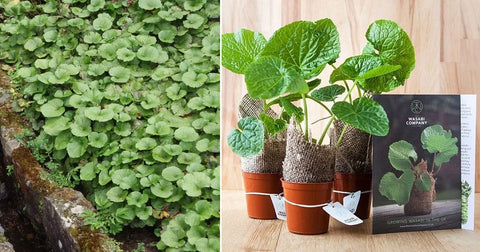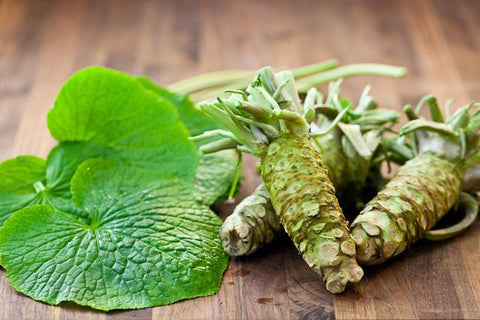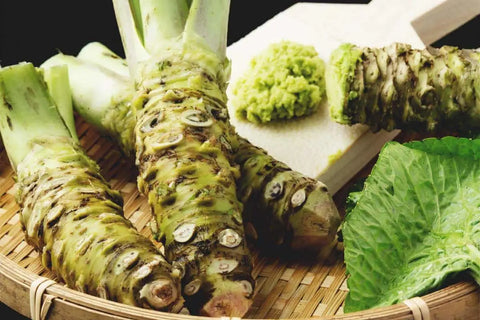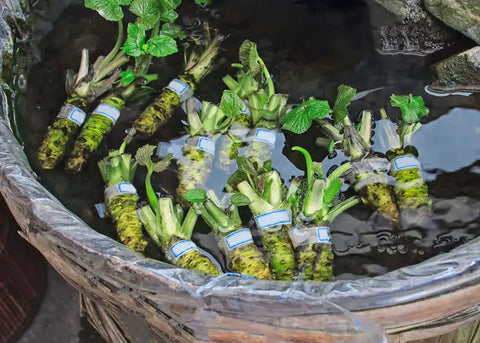The Costly World of Wasabi
How to Grow Wasabi from Seed: A Step-by-Step Guide
Wasabi is a highly sought-after ingredient that is known for its unique flavor and health benefits. It is commonly used in Japanese cuisine, especially with sushi and sashimi. However, due to its high demand and low supply, wasabi can be quite expensive. But what if we told you that you can grow wasabi from seed and enjoy fresh wasabi at home?
In this article, we will provide you with a step-by-step guide on how to grow wasabi from seed. We will cover everything you need to know, including the best growing conditions, planting and harvesting tips, and common problems and solutions.

How to Grow Wasabi from Seed: A Step-by-Step Guide
- The Unique and Prized Wasabi: Discovering Its Flavor, Rarity, and Health Benefits
- How to Grow Wasabi from Seed? A Comprehensive Guide
2.1 Choosing the Right Growing Conditions
2.2 Planting Wasabi Seeds
2.3 Tips of Caring for Wasabi Plants
- Tips for Harvesting and Storing Wasabi
- Conclusion
1. Discovering Wasabi’s Flavor, Rarity, and Health Benefits
Before we dive into the specifics of how to grow wasabi from seed, let's take a moment to understand what wasabi is and why it is so special.
Wasabi is a unique and prized plant native to Japan, known for its distinctive, pungent flavor and various health benefits. It is particularly prized for its use as a condiment for sushi and sashimi, and its rarity and high cost add to its allure.
What sets wasabi apart from other spicy condiments like mustard or horseradish is its complex and nuanced flavor profile, which combines a spicy, zesty heat with a delicate sweetness and subtle notes of umami.
Wasabi is also valued for its potential health benefits, which include anti-inflammatory and antimicrobial properties, as well as its high concentration of vitamins and minerals.

2. How to Grow Wasabi from Seed? A Comprehensive Guide
Let’s take a closer look at how to grow wasabi from seed easily and successfully.
2.1 Choosing the Right Growing Conditions
The key to successfully growing wasabi from seed is to provide the right growing conditions. Here are some tips on how to create the ideal growing environment for your wasabi plants:
- Temperature: The optimal temperature range for growing wasabi is 50-65°F (10-18°C), with cooler temperatures being preferred. While these plants can tolerate slightly warmer conditions, temperatures above 75°F (24°C) can have negative effects on their growth and overall health.
- Light: For optimal growth, Wasabi plants need to be protected from direct sunlight and require partial shade. A shade level of approximately 50% is ideal, which can be achieved by placing the plants under a canopy or by using shade cloth.
- Soil: Wasabi plants prefer moist, well-drained soil that is rich in organic matter. They do best in soil with a pH between 6.0-7.0. It's important to keep the soil moist but not waterlogged, as wasabi plants do not like to sit in water.
- Water: To ensure healthy growth, proper watering is crucial for Wasabi plants as they require consistent moisture and regular watering. Nonetheless, overwatering should be avoided as it can cause root rot and damage the plants.

2.2 Planting Wasabi Seeds
Now that you know what growing conditions are best for wasabi plants, let's talk about how to plant wasabi seeds.
Wasabi seeds can take up to 6 months to germinate, so it's best to start them indoors in a controlled environment. You can use a seed tray or small pots filled with a soilless seed-starting mix. Sow the seeds on the surface of the mix and cover them with a thin layer of vermiculite.
Keep the seedlings in a cool, shaded area and water regularly to keep the soil moist. It's important to provide adequate airflow to prevent the buildup of moisture, which can lead to fungal growth.
Once the seedlings have developed their first true leaves, they can be transplanted outdoors. Choose a site that has partial shade and rich, moist soil.
Dig a hole large enough to accommodate the root ball of the seedling, and gently remove it from its container. Place the seedling in the hole and backfill it with soil, taking care not to bury the stem too deeply. Water the plant thoroughly after transplanting.
Wasabi plants should be spaced about 12 inches (30 cm) apart to allow for adequate airflow and prevent the spread of disease.

2.3 Tips for Caring for Wasabi Plants
Once your wasabi plants are established, it's important to care for them properly to ensure healthy growth and a bountiful harvest. Here are some tips on how to care for your wasabi plants:
- Watering: Wasabi plants require consistent moisture and need to be watered regularly, especially during dry spells. However, it's important not to overwater the plants, as this can lead to root rot.
- Fertilizing: Wasabi plants benefit from regular fertilization, especially during the growing season. Use a balanced, organic fertilizer that is high in nitrogen to promote healthy foliage growth.
- Mulching: Applying a layer of organic mulch around the base of the plants can help to retain moisture, suppress weeds, and regulate soil temperature.
- Pest and Disease Control: Wasabi plants can be susceptible to pests and diseases, including aphids, slugs, and fungal diseases like powdery mildew. Use organic pest control methods and remove any infected plant material promptly to prevent the spread of disease.
3. Tips for Harvesting and Storing Wasabi
After about 18-24 months of growth, your wasabi plants should be ready for harvest. Here are some steps on how to harvest your wasabi:
- Digging up the roots: Use a digging fork or shovel to carefully dig up the roots of the wasabi plant. Take care not to damage the delicate roots, which are prone to breaking.
- Cleaning the roots: Wash the roots thoroughly under running water to remove any dirt or debris.
- Grating the roots: Wasabi is typically grated using a special grater called an oroshigane. You can also use a fine grater or a microplane to grate the roots.
- Storing the wasabi: Freshly grated wasabi should be used immediately or stored in an airtight container in the refrigerator for up to a week. Wasabi can also be frozen for longer-term storage.
4. Conclusion
Growing wasabi from seed is a rewarding and satisfying experience that allows you to enjoy fresh wasabi at home. By providing the right growing conditions, planting and caring for your wasabi plants, and harvesting the roots at the right time, you can produce a bountiful crop of this prized ingredient. We hope that this guide has helped teach you how to grow wasabi from seed. Visit The Rike today to purchase your wasabi seed and start enjoying all the benefits it has to offer.





Leave a comment